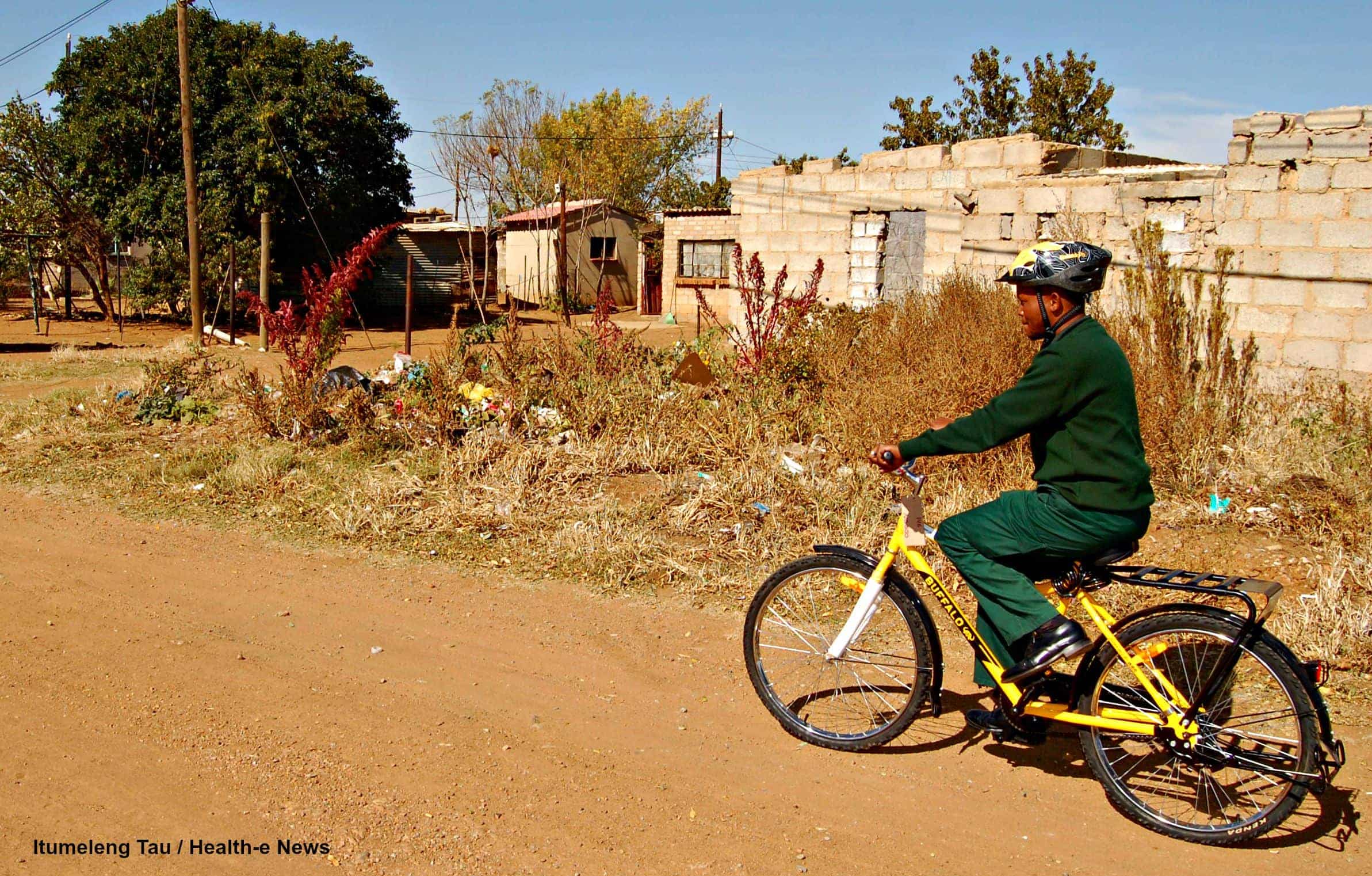Where are the children in the NHI?

Child and adolescent health matters. It sets the trajectory for our lifelong health and development. For example, we know that infants starved of nutrients in the womb are likely to become overweight as adults and to develop non-communicable diseases (NCDs) such as hypertension, diabetes, cardiovascular disease and certain cancers.
A child who is obese by the age of five is 45 times more likely to be obese as an adult. Being overweight and obese also increases dramatically across the life course – rising from 13% in children under five years to 40% in adolescent girls and 68% in adult women.
In addition, an estimated 70% of preventable deaths from adult NCDs have been linked to risks encountered during adolescence, and 50% of mental health conditions are established by the age of 14. So, how does early adversity get under children’s skins and to what extent does the National Health Insurance (NHI) Bill respond to the latest science and prioritise the needs of children and adolescents?
How early adversity gets ‘under the skin’
Children’s early environment– their nutrition, care arrangements and living conditions – not only impact on their physiology, they also get ‘under the skin’ to influence the programming of children’s genes, and may over time become hardwired in the brain.
In other words, these early experiences – starting in utero, and even pre-conception – have a persistent impact on health and development. Some of these effects remain latent for many years – for example heart disease does not emerge until middle age, while others set children on a particular developmental pathway or trajectory. For example, stunting (a sign of chronic malnutrition) not only increases children’s risk of developing obesity later in life, it compromises their cognitive development, education outcomes and employment prospects.
The case for early intervention
This requires a fundamental shift in thinking and practice. Instead of concentrating all our resources on the adult burden of disease, we need to intervene early – starting in the first 1 000 days of life and continuing into adolescence – as this is when the developing body and brain are the most sensitive to environmental cues and investments are likely to yield the highest returns.
Over the last decade, we have made gains in reducing child poverty and improving children’s access to services, so there is a strong foundation on which to build. Yet nearly 60% of children still live below the poverty line, 30% do not have access to piped water on site, and 20% live in overcrowded households.
These living conditions make it extremely difficult for families to meet children’s basic needs and protect them from harm. Therefore, it’s not surprising that 27% of young children are stunted, 42% have experienced some form of physical, sexual or emotional abuse, an estimated 10 – 20% of children have a diagnosable mental health condition such as depression, anxiety or a substance use disorder, and 37% of youth are not in employment, education and training. This is compounded by poor access to healthcare services with 20% of children travelling far to reach a healthcare facility.
This equates to a tremendous loss of potential that impacts on the life chances of young people today and the next generation of children. It’s important that the NHI prioritises investments in child and adolescent health as early and sustained investment will have continuously positive returns for South Africa.
Children lost in the policy?
The NHI Bill aims to ensure universal health coverage and affirms children’s constitutional right to basic health care services, yet it’s not clear what this means in practice. Defining a broad package of essential healthcare services that aim to promote not only survival, but children’s optimal health, nutrition and development is an urgent intervention to an otherwise broad NHI mandate. This definition should extend beyond treatment, to include early intervention, prevention, rehabilitation and palliative care for the growing number of children with long-term health conditions. It’s concerning that child health is not represented on the Benefits Advisory Committee and other decision-making bodies that will define the baskets of care and list of essential medicines, and there is a danger that the focus on adult medicine and drive for efficiency may undercut children’s best interest.
Similarly, there is a danger that those facilities serving the most vulnerable children living in rural areas and informal settlements may not meet the criteria for accreditation – and that in the process NHI may intensify existing inequalities between rural and urban centres, rich and poor, private and public healthcare services.
Finally, the NHI needs to revive the National Health Commission proposed in the White Paper in order to promote intersectoral collaboration and address the broader social determinants of child health and nutrition.
A call for leadership
Strong leadership is needed to champion child and adolescent health at the district, provincial and national level to ensure children receive their fair share of resources. Child and adolescent health must be adequately represented on the Benefits Advisory Committee to ensure that the unique vulnerabilities and health care needs of children and adolescents are explicitly addressed in both the formulary and baskets of care.
A similar process of engagement with the Office of Health Standards Compliance is needed to ensure that the national norms and standards are aligned with children’s rights and best interests. We also need to support the efforts of provincial paediatricians and District Clinical Specialist Teams, who are responsible for strengthening systems and driving quality improvement, to ensure that clinics and hospitals serving rural and vulnerable children are accredited and able to offer quality care.
Lori Lake, Children’s Institute (UCT); Maylene Shung-King, Health Policy and Systems Division of the School of Public Health and Family Medicine (UCT); Michael Hendricks, Department of Paediatrics and Child Health (UCT); and Shane Norris, DSI-NRF Centre of Excellence of Human Development are contributors to the South African Child Gauge 2019 which is published by the Children’s Institute, University of Cape Town in partnership with the DSI-NRF Centre of Excellence in Human Development, University of the Witwatersrand; UNICEF South Africa; the Standard Bank Tutuwa Community Foundation and the Desmond and Leah Tutu Legacy Foundation.
Author
Republish this article
This work is licensed under a Creative Commons Attribution-NoDerivatives 4.0 International License.
Unless otherwise noted, you can republish our articles for free under a Creative Commons license. Here’s what you need to know:
You have to credit Health-e News. In the byline, we prefer “Author Name, Publication.” At the top of the text of your story, include a line that reads: “This story was originally published by Health-e News.” You must link the word “Health-e News” to the original URL of the story.
You must include all of the links from our story, including our newsletter sign up link.
If you use canonical metadata, please use the Health-e News URL. For more information about canonical metadata, click here.
You can’t edit our material, except to reflect relative changes in time, location and editorial style. (For example, “yesterday” can be changed to “last week”)
You have no rights to sell, license, syndicate, or otherwise represent yourself as the authorized owner of our material to any third parties. This means that you cannot actively publish or submit our work for syndication to third party platforms or apps like Apple News or Google News. Health-e News understands that publishers cannot fully control when certain third parties automatically summarise or crawl content from publishers’ own sites.
You can’t republish our material wholesale, or automatically; you need to select stories to be republished individually.
If you share republished stories on social media, we’d appreciate being tagged in your posts. You can find us on Twitter @HealthENews, Instagram @healthenews, and Facebook Health-e News Service.
You can grab HTML code for our stories easily. Click on the Creative Commons logo on our stories. You’ll find it with the other share buttons.
If you have any other questions, contact info@health-e.org.za.
Where are the children in the NHI?
by Guest Author, Health-e News
March 3, 2020
MOST READ
Prolonged power outage leaves hospitals in the dark for two days
There’s more to self-care than scented candles or massages, it’s a key public health tool
Malaria can’t be beaten without political will and more funding
Access to clean water and stable electricity could go a long way to addressing rising food poisoning in SA
EDITOR'S PICKS
Related

PHASA 2019 Reflections: The right to health after 25 years of democracy

10 questions about Sizani Universal Healthcare — the DA’s answer to NHI

